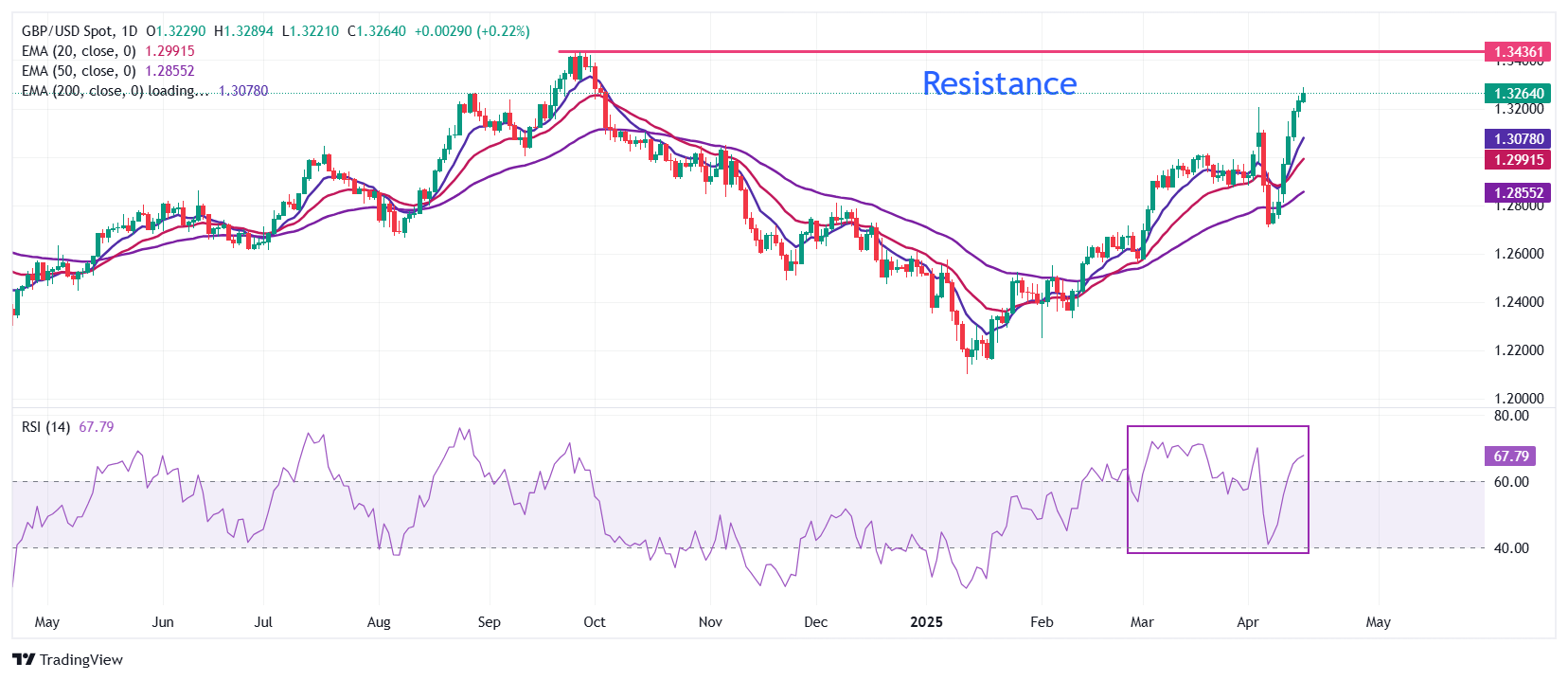-
The Pound Sterling faces pressure against major currencies following a weaker-than-expected UK CPI for March.
-
Soft inflation data and a bleak employment outlook set the stage for a potential Bank of England rate cut in May.
-
Investors are closely monitoring new developments in trade negotiations between the US and its global partners.
The Pound Sterling (GBP) faces selling pressure against most major currencies on Wednesday, except the US Dollar (USD), following the release of weaker-than-expected UK Consumer Price Index (CPI) data for March.
The Office for National Statistics (ONS) reported that the headline CPI increased by 2.6% year-on-year, below the forecast of 2.7% and the previous 2.8%. Core CPI, which excludes volatile items like food, energy, alcohol, and tobacco, rose by 3.4%, matching expectations but slower than the prior reading of 3.5%. Month-on-month, the headline inflation grew by just 0.3%, softer than the anticipated 0.4%.
Inflation within the services sector, closely monitored by the Bank of England (BoE), also slowed to 4.7% year-on-year from 5%, further indicating cooling inflationary pressures. This has fueled market expectations that the BoE may opt for an interest rate cut during its May monetary policy meeting.
In addition, the grim outlook for the UK labor market, exacerbated by a hike in employers’ National Insurance contributions starting this month, is adding to the case for a monetary policy easing. In the recent Autumn Budget, Chancellor Rishi Reeves raised employers’ National Insurance contributions from 13.8% to 15%.
Market Movements: Pound Sterling Outperforms US Dollar
- The Pound Sterling continues its rally against the US Dollar (USD), reaching near 1.3290 during European trading on Wednesday. This comes as the USD weakens across the board, fueled by growing concerns that US economic policies, particularly trade tariffs under President Donald Trump, could push the economy into a recession. The US Dollar Index (DXY) dips to 99.50 after a brief rebound to 100.00 on Tuesday.
- Despite Trump’s declaration of a 90-day pause on reciprocal tariffs for most trading partners (excluding China), investors remain wary that ongoing trade tensions with China will negatively affect the US economy. The US is unlikely to quickly replace Chinese imports due to limited manufacturing capacity and a lack of low-cost alternatives. This is expected to drive up the prices of substitutes, reducing households' purchasing power and potentially slowing economic growth, as consumer spending accounts for about two-thirds of US GDP.
- In the meantime, investors are closely watching for new announcements from the White House regarding trade deals with other nations. US Press Secretary Karoline Leavitt confirmed on Tuesday that the Trump administration is in discussions with over 15 countries and may announce some agreements soon. On a potential trade deal with the UK, US Vice President JD Vance expressed optimism, stating there is a "good chance" the two nations will reach an agreement due to President Trump’s favorable stance toward Britain.
Technical Analysis: GBP/USD Extends Bullish Momentum

The Pound Sterling extends its winning streak for the seventh consecutive day, reaching near 1.3300 against the US Dollar on Wednesday. The short-term outlook remains positive as all key Exponential Moving Averages (EMAs) are trending upward.
The 14-day Relative Strength Index (RSI) has surged from 40.00 to 68.00, signaling strong bullish momentum.
Support for the pair lies at the psychological level of 1.3000, which is a crucial zone for any downside movement. On the upside, the next major resistance is at the three-year high of 1.3430.





